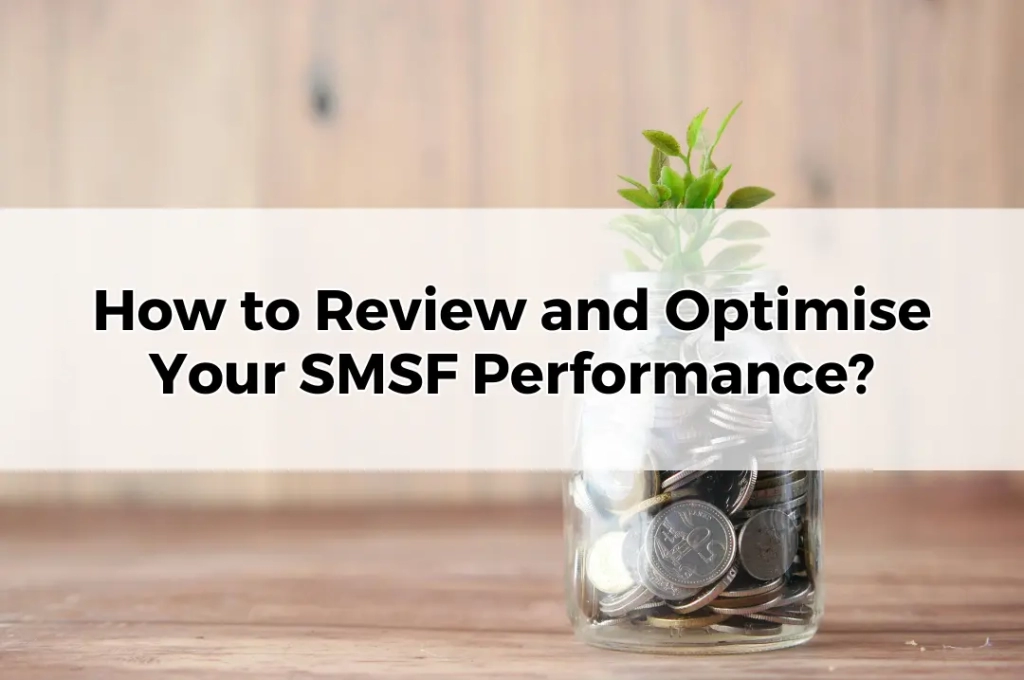How to Review and Optimise Your SMSF Performance
Table of Contents
ToggleSelf-Managed Super Funds (SMSFs) offer a unique opportunity for individuals to take control of their retirement savings. Regular reviews and optimisations are essential to ensure that your SMSF is performing at its best and aligning with your financial goals.
Understanding SMSFs
Definition and Purpose
An SMSF is a private superannuation fund that you manage yourself, providing greater control over your investment choices and strategy. Its primary purpose is to provide retirement benefits for its members.
Benefits of SMSFs
SMSFs offer flexibility, control, and potential tax advantages. They allow for a tailored investment strategy and can accommodate a diverse range of assets, including property and shares.
Assessing Current SMSF Performance
Reviewing Investment Returns
Begin by evaluating the investment returns of your SMSF. Compare the performance of each asset against initial expectations and industry benchmarks to identify any discrepancies.
Comparing Benchmarks
Benchmarking is crucial. Measure your SMSF’s performance against relevant market indices and similar funds. This provides a clear picture of how well your investments are performing.
Evaluating Asset Allocation
Diversification Strategies
Diversification is key to managing risk. Ensure your SMSF portfolio is spread across various asset classes to mitigate potential losses from any single investment.
Risk Management
Regularly review your risk management strategies. Adjust your asset allocation to align with your risk tolerance and changing market conditions.
Monitoring Cash Flow and Liquidity
Importance of Liquidity
Liquidity ensures that your SMSF can meet its short-term obligations. Maintaining adequate cash reserves is vital for operational flexibility and financial stability.
Cash Flow Analysis
Conduct a thorough cash flow analysis to track incoming and outgoing funds. This helps in identifying patterns and potential issues, ensuring smooth fund operations.
Reviewing SMSF Expenses
Administrative Costs
Examine the administrative costs associated with running your SMSF. These include accounting, auditing, and legal fees. Keeping these costs in check maximises your overall returns.
Investment-Related Fees
Scrutinise the fees related to investment management, such as brokerage and advisory fees. Reducing these expenses can significantly enhance your net returns.
Compliance and Regulatory Obligations
Staying Compliant with ATO Regulations
Compliance with Australian Taxation Office (ATO) regulations is non-negotiable. Regularly update yourself on the latest rules and ensure your SMSF adheres to them.
Regular Audits
Conduct annual audits to maintain compliance and identify any potential issues early. An independent auditor can provide an objective review of your SMSF’s operations.
Optimising Investment Strategy
Identifying Underperforming Assets
Identify and evaluate underperforming assets. Decisive action, whether it’s selling or repositioning these assets, is crucial for optimising overall performance.
Rebalancing the Portfolio
Regularly rebalance your portfolio to maintain your desired asset allocation. This helps in capturing gains and managing risks effectively.
Tax Planning for SMSFs
Tax-Effective Strategies
Implement tax-effective strategies to maximise your SMSF’s growth. Consider strategies like income streaming and tax-effective withdrawals.
Understanding Concessional and Non-Concessional Contributions
Familiarise yourself with concessional (pre-tax) and non-concessional (post-tax) contributions. Balancing these contributions can optimise your tax position and retirement savings.
Enhancing Member Contributions
Maximising Contributions
Encourage maximum contributions within allowable limits. This boosts the fund’s capital base, enhancing its ability to grow.
Strategies for Catch-Up Contributions
Utilise catch-up contribution strategies for members who have under-contributed in previous years. This is particularly beneficial as retirement nears.
Engaging Professional Advisors
Financial Advisors
Engage experienced financial advisors to gain insights and professional guidance. They can help in optimising your investment strategy and ensuring compliance.
Legal and Tax Experts
Legal and tax experts are essential for navigating complex regulations and tax planning. Their expertise ensures that your SMSF operates within legal frameworks and maximises tax benefits.
Technology and SMSF Management
Digital Tools and Platforms
Leverage digital tools and platforms for efficient SMSF management. These tools simplify administration, investment tracking, and compliance reporting.
Benefits of Automation
Automation reduces manual errors and saves time. Automate routine tasks like record-keeping and transaction processing to enhance efficiency.
Planning for Retirement
Setting Clear Retirement Goals
Set clear and realistic retirement goals. These goals will guide your investment strategy and ensure your SMSF aligns with your long-term objectives.
Transitioning to the Pension Phase
As retirement approaches, plan the transition to the pension phase. This involves shifting focus from accumulation to income generation, ensuring a steady retirement income stream.
Conclusion
Regularly reviewing and optimising your SMSF is crucial for maximising its performance and ensuring it aligns with your retirement goals. By taking a proactive approach and leveraging professional advice, you can navigate the complexities of SMSF management and secure a comfortable retirement.









